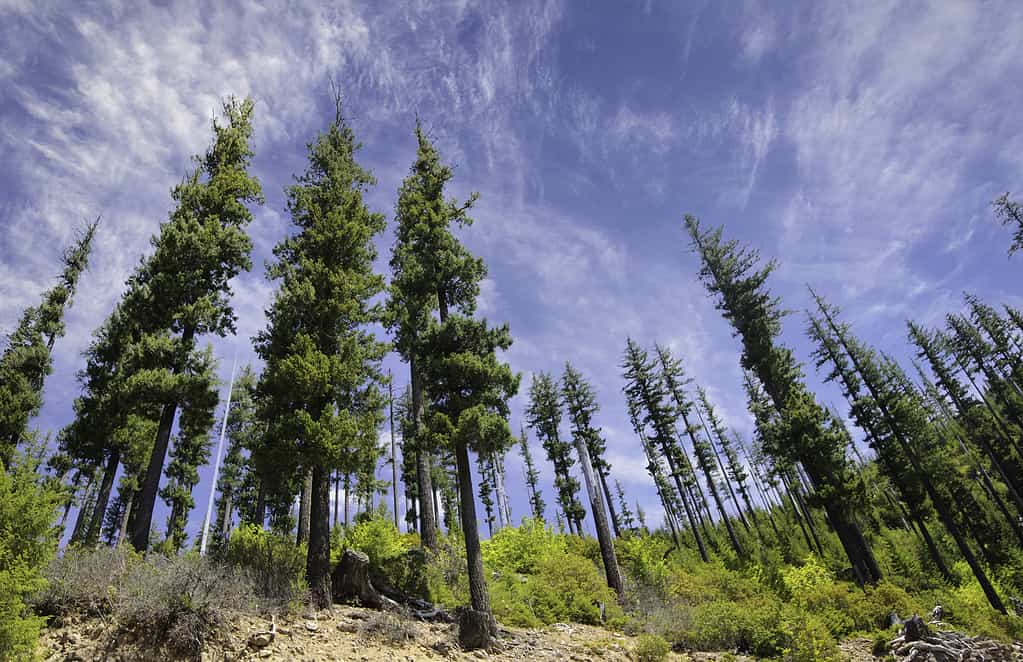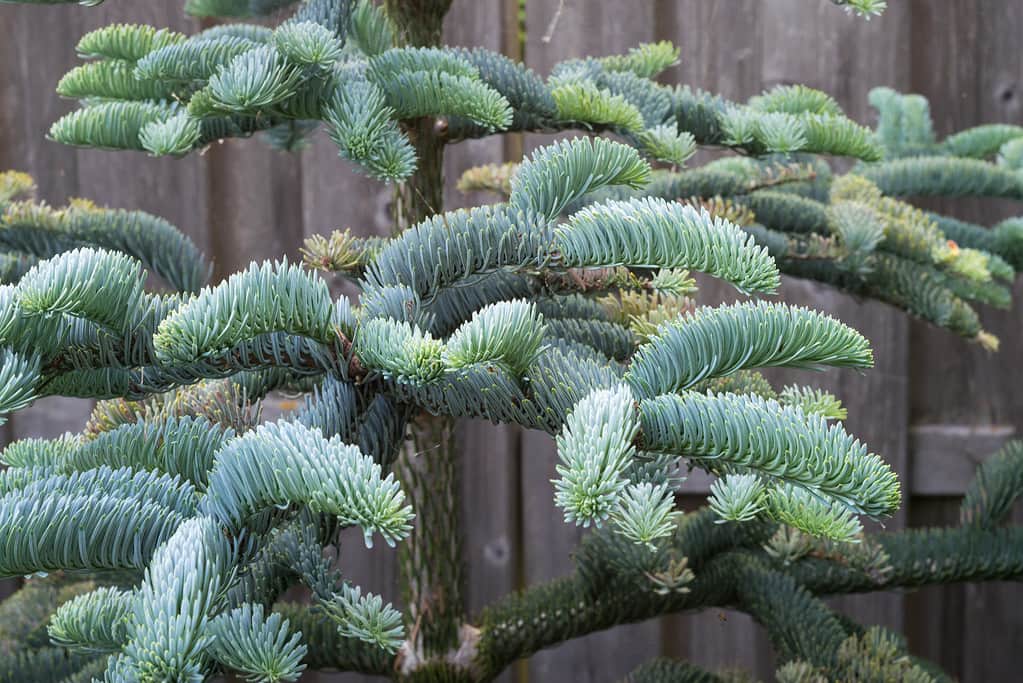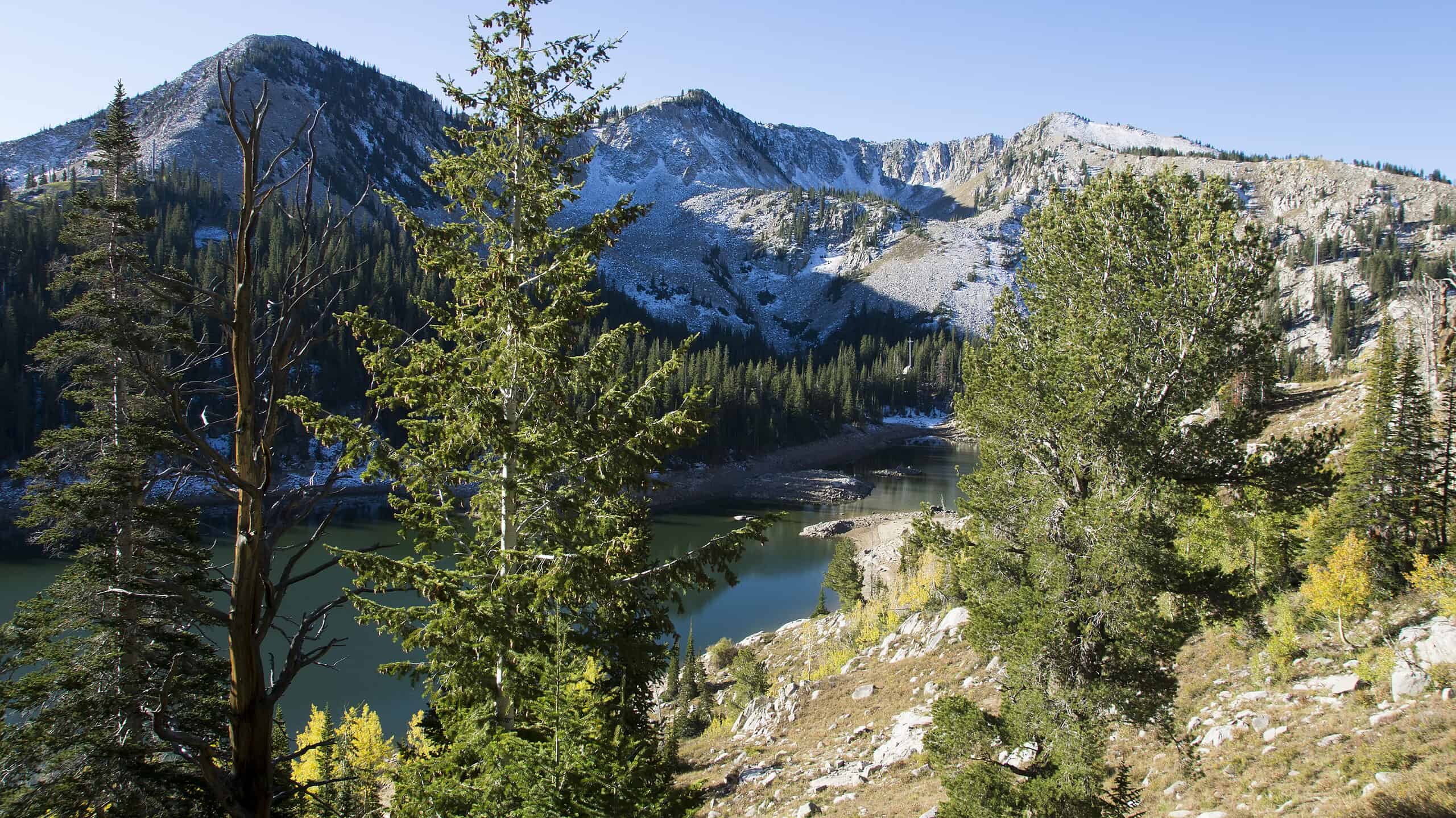Fir Trees are beautiful, bushy and bold. These characteristics distinguish themselves as one of the most prominent and essential members of the treeline of the west coast of the United States.
There are several species of fir trees, each one carrying its own set of unique characteristics that sets it apart from the other subspecies. The Noble Fir and Douglas Fir are two of the most common species, and two of the easiest to confuse.
If youre set to do some hiking in the Mountain West, take a look at this set of differences between these two types of firs. It might help you identify them in the wild.
1. Distribution

Douglas Fir have a much wider distribution than Noble Fir ultimately.
©Hugh K Telleria/Shutterstock.com
One way to easily tell the difference between these two firs is by where exactly you are in the world. If you’re on the coast, you’re likely seeing the coastal Douglas Fir. This is because Noble Firs are exclusively found on inland mountain ranges.
There are two different major subspecies of Douglas Fir: The Coastal Douglas Fir, and the Rocky Mountain Douglas Fir. The latter is found across the mountain west states, but its range rarely overlaps with that of the Noble Fir.
The Noble Fir exists in the inland mountain ranges of the west coast, from Northern California up to Washington. It doesn’t quite reach east enough to be in the same range as the Mountain Douglas Fir. The Coastal Douglas Fir does overlap with the Noble Fir, but is differentiated by other means that are outlined below.
Adding to the confusion, the Noble Fir shares range with another species of fir called the Pacific Silver Fir. However, the latter’s intensely silver hue makes it easy to identify.
2. Cones
These two species of tree have very distinctive and different looking pine cones that are fairly easy to identify.
A douglas fir pinecone points downward, with each plate of the cone containing a distinctive “tassle”. In addition, these cones are much smaller than those of the Noble Pine, which can reach sizes of approximately four to nine inches. This is quite large for a pine cone.
The cone of a Noble Fir is much different. This cone points vertically from the branch of the tree, and doesn’t have the tassles that make the cone of the Douglas Fir so easy to identify.
3. Needles
The needles of these two trees are also quite distinctive. This is another easy way to tell the difference between these two types of firs.
The needs of a Noble Fir are taught and short, and range from silver to light blue in color and hue. The stiffness and sturdiness of these needles are partially what helps to support the heavy cones of the Noble Fir. In addition, it has contributed to the tree’s popularity as a Christmas tree, as the needles are good for hanging ornaments.
The needles of a Douglas Fir are longer and flatter than those of the Noble Fir. They also tend to appear more dark green in hue, with the young shoots of needles appearing a distinctive light green.
4. Uses

Noble Fir needles are taught and firm.
©Meindert van der Haven/iStock via Getty Images
The difference in the hardiness and quality of the wood has lent to them being utilized for different purposes throughout history. In addition, their needles and sap have been used by the indigenous people of North America for centuries.
The Noble Fir has an extensive history of being used for various specialized purposes due to its delicate composure. Some examples include producing specialized forms of paper. Many wooden ladders are made from Noble Fir. In a historical example, some of the frames
On the other hand, the Douglas Fir has been primarily used for softwood timber. It can be found in timber frame construction and trusses. In addition, many hardwood floors are made of Douglas Fir. In centuries past, the Douglas Fir was utilized extensively as a shipbuilding wood for large wooden boats.
5. Age
There are some differences between the ages that Noble Firs and Douglas Firs are able to reach. In general, a Douglas Fir grows to be significantly older than the average Noble Fir.
Noble Firs tend to reach about 200 years old. Contrarily, Douglas Firs can grow to be several centuries older, with some reaching upwards of 400 years old. These numbers reference the upper edge of these two species of tree’s lifespans.
Although you won’t necessarily be able to tell the exact age of a tree just by seeing one, the general size and girth of a tree can give you a ballpark guess.
Thank you for reading! Have some feedback for us? Contact the AZ Animals editorial team.








